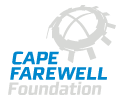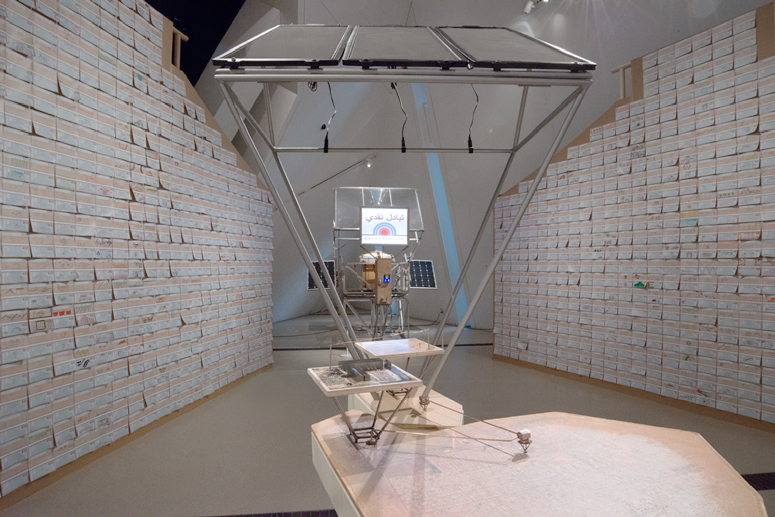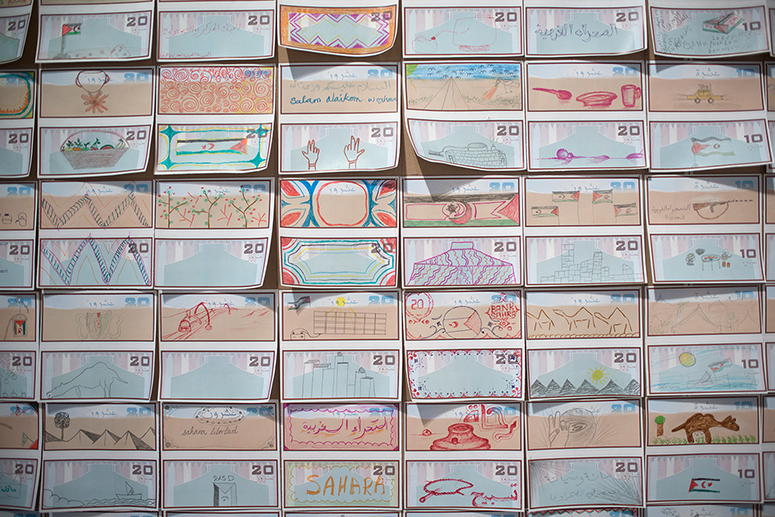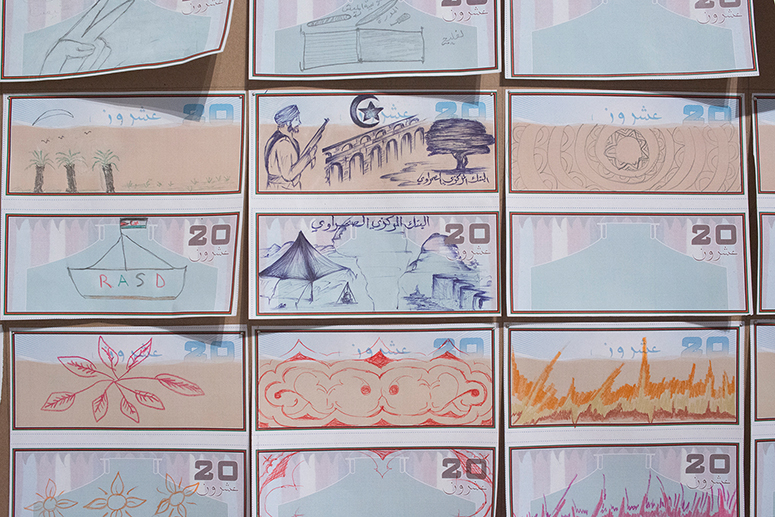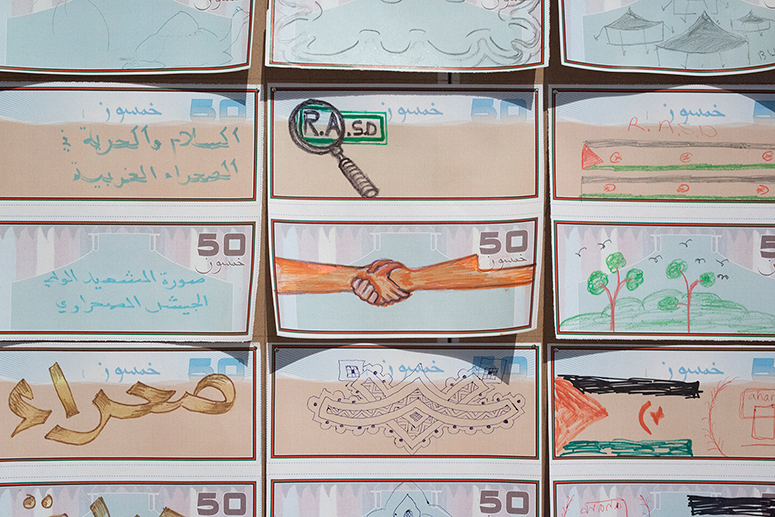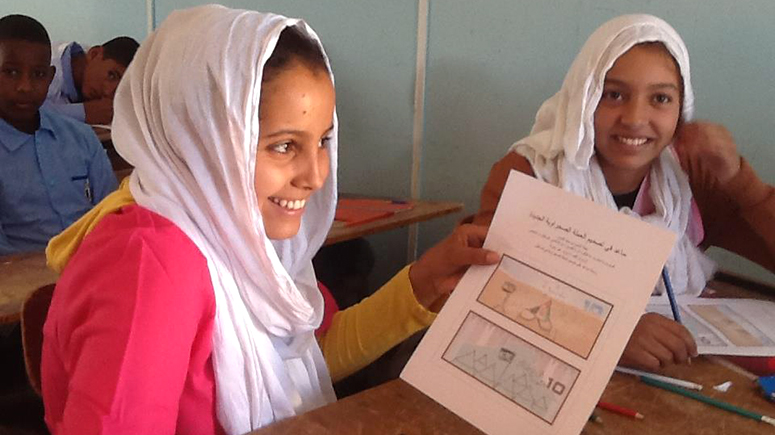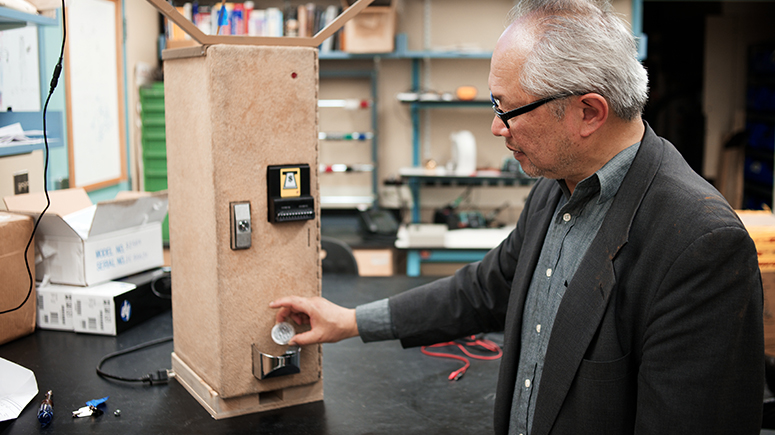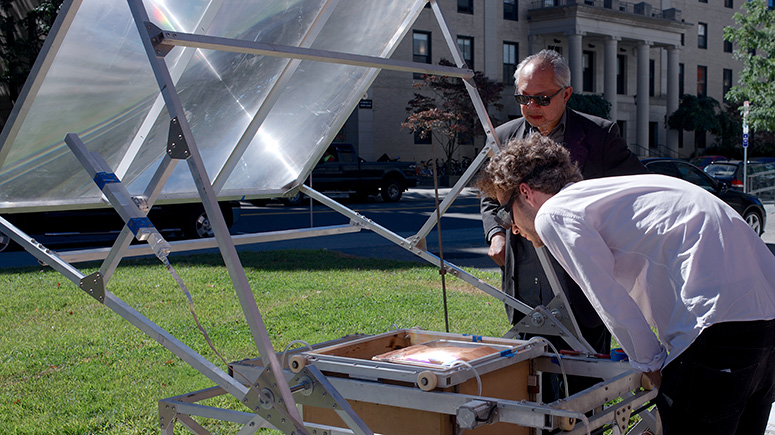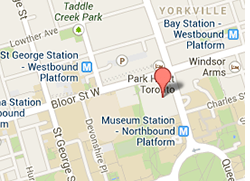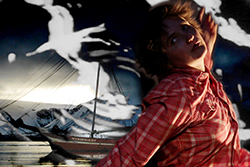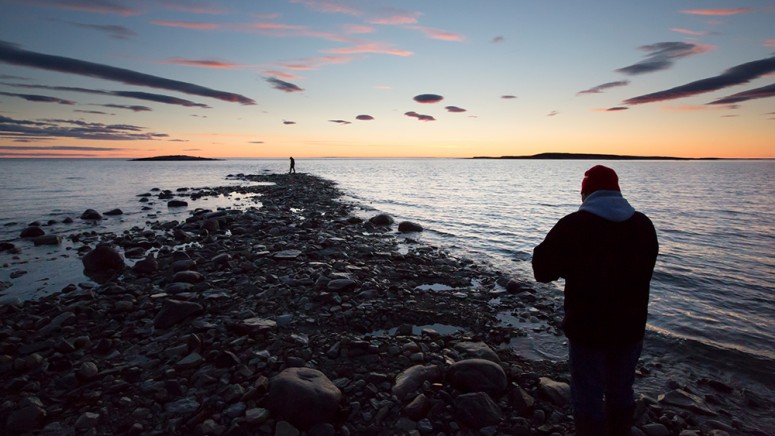The Potential Project
Mel Chin
Installation of drawings, models, and symbolic mechanics, 2013
Roloff Beny Gallery, ROM Level 4
A collaborative presentation by Mel Chin, with the people of the Western Sahara, Ahmed Boukhari, Dr. Richard Corkish, Markus A. R. Kayser, Mohamed Sleiman Labat, Jonathan Teo, with thanks to Robin Kahn, Kirby Gookin, and Representative Mohamed Yeslem Beissat
“The Potential Project is on behalf of the Western Saharan people.
Year after year, the voices of hundreds of thousands of refugees seeking the right to self-determination go unheard by the international community.
The Saharawi were driven from their native land by war and, in the judgment of the International Court of Justice, illegal occupation. They have been living in refugee camps for 38 years, waiting for a U.N.-brokered referendum to establish their independence. They have few resources other than humanitarian aid and a resilient, progressive leadership shared by women and men, united in a tireless quest for independence.
This project focuses on economic and technological innovation as ways to bring about a new form of independence—for all.”
Mel Chin
American artist Mel Chin has been working with the Saharawi to pursue their goal of independence and find a real means of self-determination by developing both their own currency and an economy “backed, not by gold or gas, but by the sun.”
The scope of the Potential Project is tremendous, involving the collective design of the currency itself, as well as the construction of a Stand Alone Power Station in Mijek, Western Sahara.
For the ROM exhibition, by way of introducing the larger project, Chin has collaborated with Markus A. R. Kayser of MIT (Massachusetts Institute of Technology) Media Lab’s Mediated Matter Group, to create The Saharan Sand Dollar Exchange Machine. Visitors are encouraged to exchange Canadian currency for coins made of fused Western Saharan sand. Proceeds will be used to continue the larger project, and support the effort to create the Bank of the Sun and a currency with imagery derived from different generations of Western Saharan citizens.
This work was made possible through the generous support of the Compton Foundation.
In a place where the climate has the most to give in terms of solar potential, the Western Sahara, live people who have lost almost everything. The Saharawi people cling to a small sliver of “liberated territory,” separated from the sea and natural resources by a 2700 km Moroccan-built berm littered with more land mines than any other place on the planet.
The creation of The Potential Project was compelled by the desperate shortage of humanitarian, economic, and most natural resources, in the Western Sahara. What they do have, in limitless abundance, is the priceless power of the Sun.
A rich Saharawi nomadic culture deserves more than eternal entrapment in the camps of a foreign land, Algeria. This project aspires to help them gain what they deserve. There is also an opportunity here to convey more than the generosity of a nomadic culture and its capacity to spread ideas.
- Is it possible to create a solar standard of economics?
- Can the diffusion of economic/technological innovation impact and liberate a larger world system, driven by oil-based economics?
- Can a culture with so little influence in the world offer a course correction for a global economic system?
- Are humanitarian climates worth the same care and conservation as the efforts to solve global climate change?
- Is the idea provocative enough to pursue a working model?
Mel Chin
Mel Chin is a multi-award winning conceptual artist. He is known for the broad range of approaches in his art, including works that require multi-disciplinary, collaborative teamwork. Mel insinuates art into unlikely places, including destroyed homes, toxic landfills, and even popular television, investigating how art can provoke greater social awareness and responsibility.
Multimedia Extras
Markus A. R. Kayser’s Solar Sinter in Action
A video of Markus A. R. Kayser‘s Solar Sinter project in action, from 2011.
About the project: “In a world increasingly concerned with questions of energy production and raw material shortages, this project explores the potential of desert manufacturing, where energy and material occur in abundance.
In this experiment sunlight and sand are used as raw energy and material to produce glass objects using a 3D printing process, that combines natural energy and material with high-tech production technology.
Solar-sintering aims to raise questions about the future of manufacturing and triggers dreams of the full utilisation of the production potential of the world’s most efficient energy resource – the sun. Whilst not providing definitive answers, this experiment aims to provide a point of departure for fresh thinking.”

